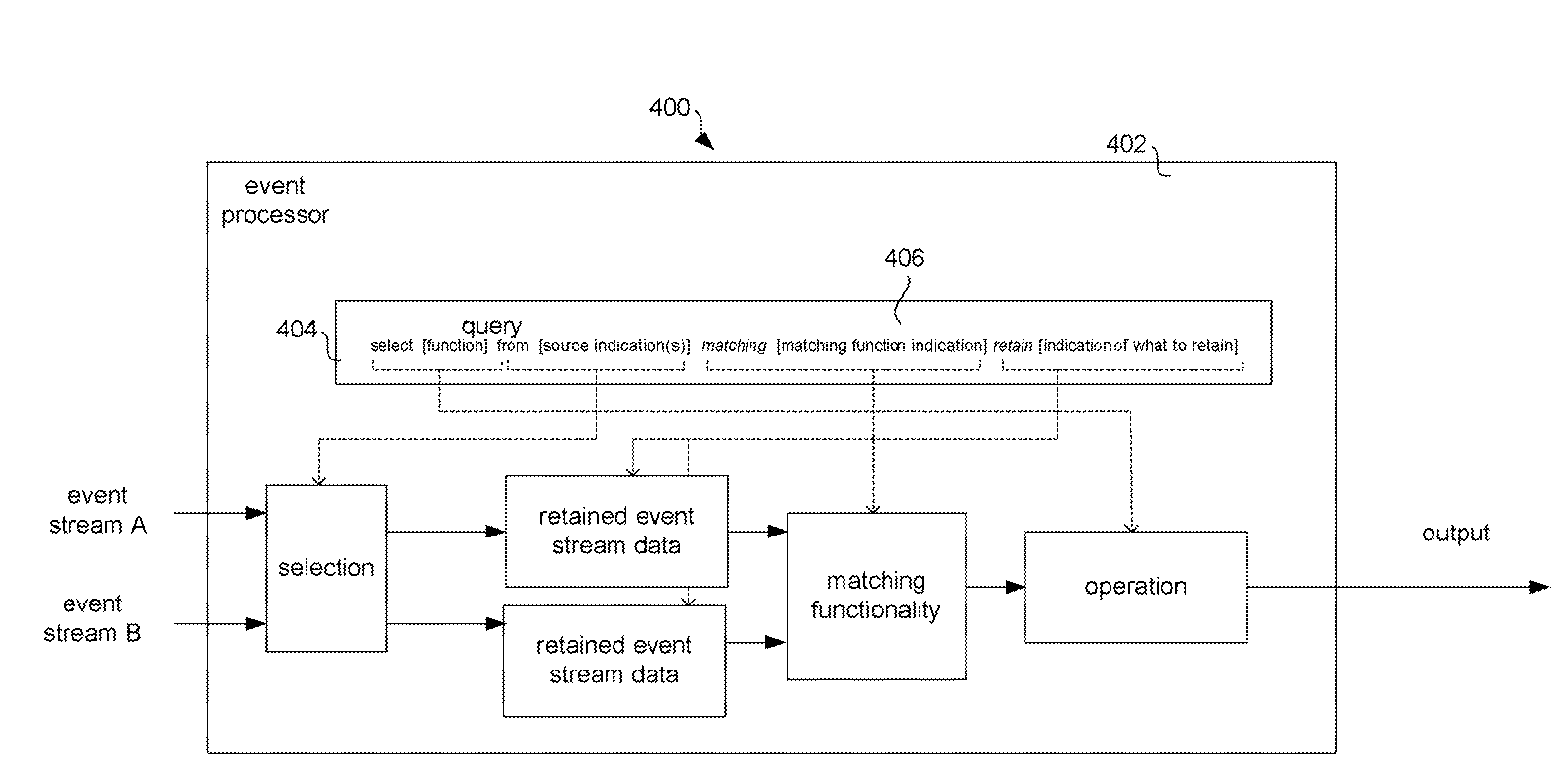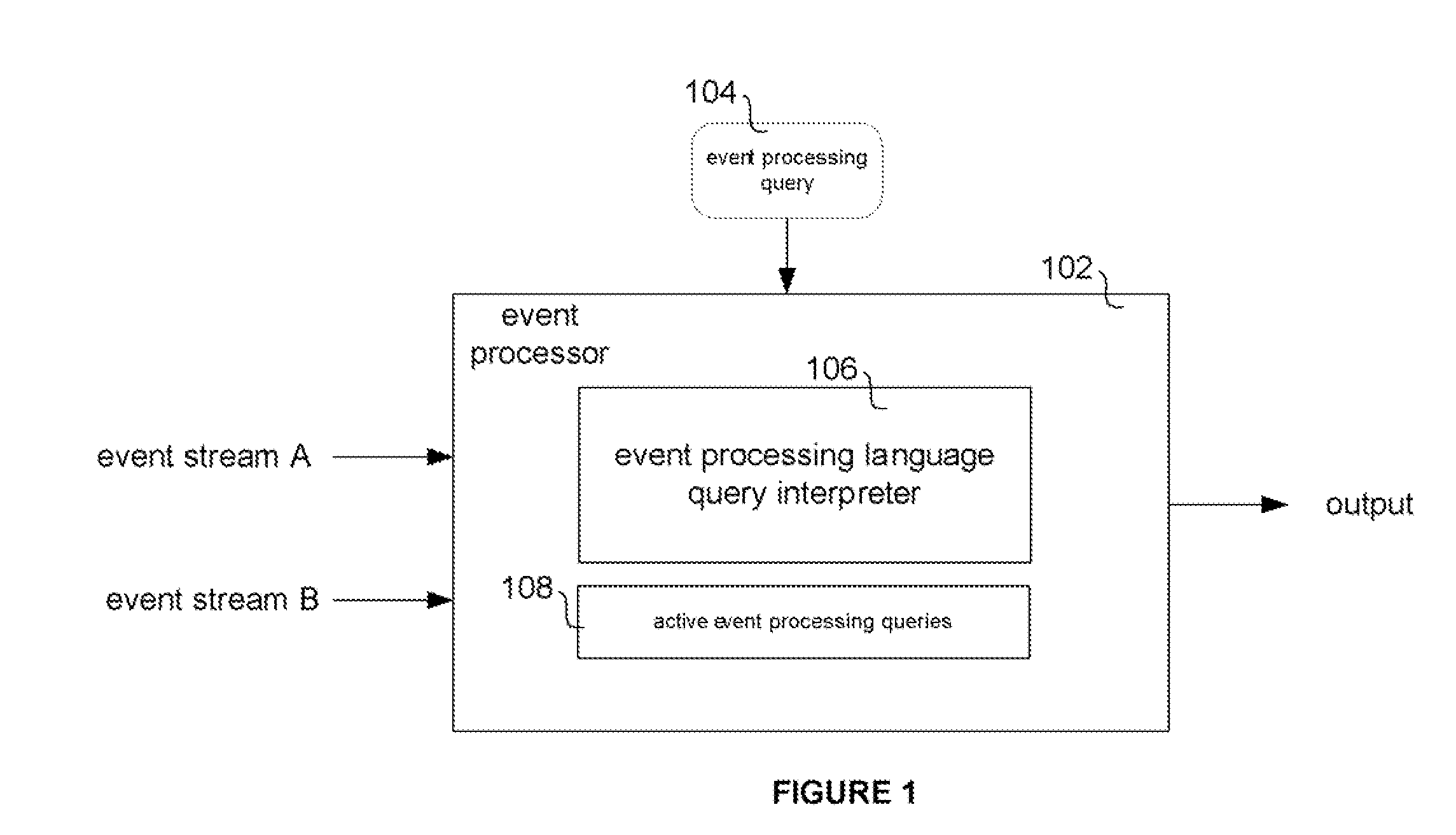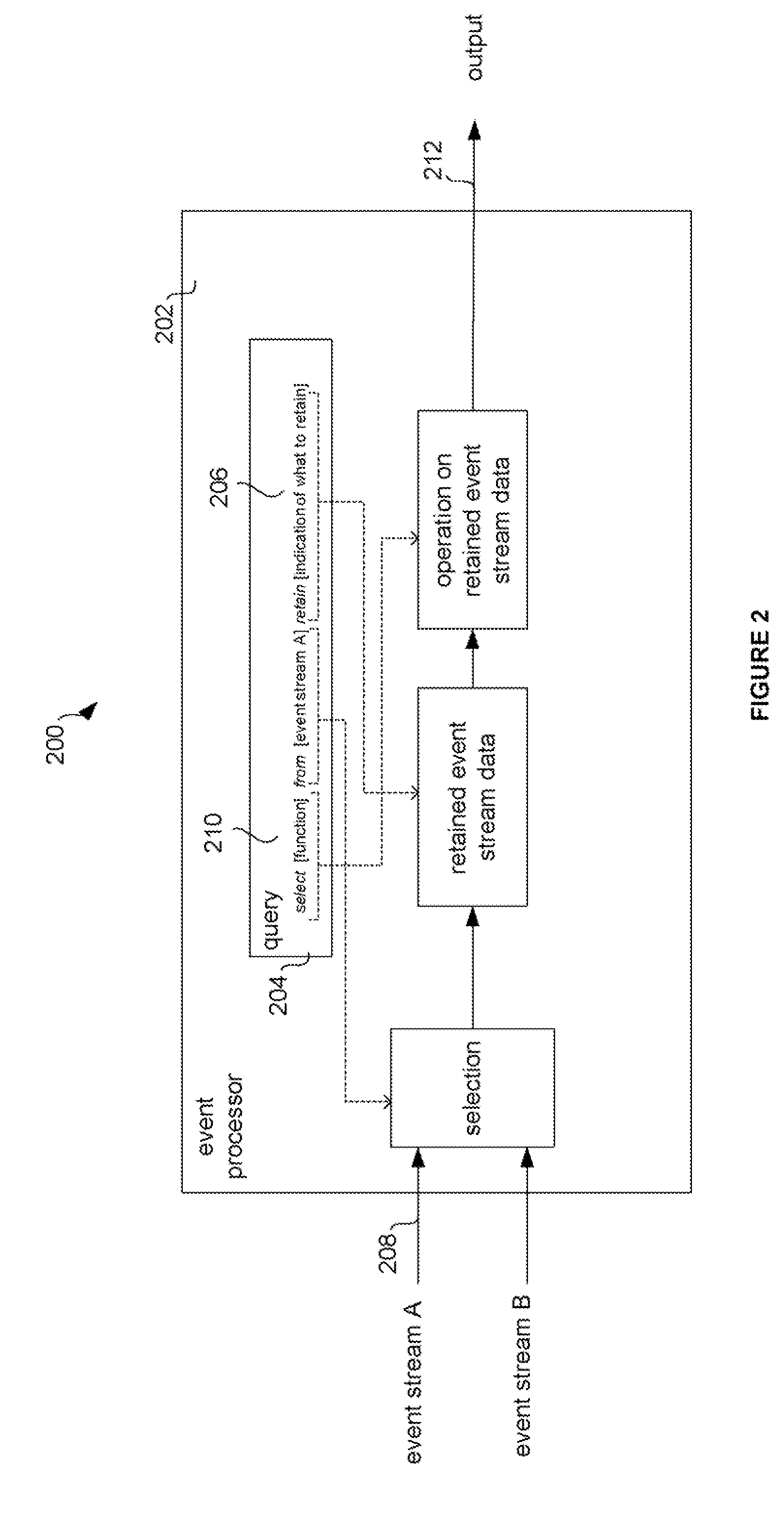It is not feasible to expect a UI to monitor every event flowing through the
system, so there must be a way of
rate limiting the output to a subset of the events that can be handled by the monitoring application.
This may potentially degrade performance.
In one embodiment, an EVERY operator can be used, but this may affect performance.
The expressive power of a language is often at
odds with
usability.
Although simpler, since fewer concepts are introduced, the level of control is not as fine grained as would be achieved with the former approach.
Can cause an error at parse time or keep all incoming events.
However, the processor for the query would have to be a single query which may become cumbersome if many queries have subqueries.
If a module does not directly listen to the
stream, it is likely to miss data.
Notably, the time constraint can be very coarse.
Similarly to previous use-case, however in this case volume is higher and cannot be handled by a
single server application.
They are issues aggregating data across partitions.
During fail-over, some events may be lost.
In the latter case, it is desirable to have the result as quickly as possible, in the former case it is mandatory to have the result within a time period otherwise it is not useful anymore.
Of course, as the
scenario becomes more complicated, for example when having multiple streams, and applications, the processing time can increase.
Unpredictability, or
jitter, can cause latency increase.
There are currently no tools to allow one to see where
dead time is spent.
WLRT can support
event correlation between the streams of events, however, due to its complexity; we may limit some of the usage of this functionality until we are able to fully optimize it.
Real-time
programming is generally complicated; one has to deal with managing their own memory, modeling thread prioritization and
thread scheduling, priority inversions, pre-allocation of data structures, etc.
Part of this trend was caused by the seeming complexity of J2EE, where one ended up having to mix together
business logic with technology-specific code, such as it is the case of Enterprise
Java Beans (EJBs).
There is nothing preventing one from using other
programming models, such as EJB, to assemble and configure applications that use realtime
application server services.
One problem with this approach is if applications need to share the same service instance.
However, OSGi caches the service object created by the service factory per bundle, in another words, it would not allow one to create more than one service object from the service factory in the same bundle, hence this may not be
usable.
However, it is not allowed to change the priority of a thread Executor, or to change the port of an established I / O connection, as these operations are disruptive.
Methods that do not allow changes after their initialization can throw an IllegalStateException.
Also, realtime application
server is not providing any wrapping of the CE Launcher, or providing its own
bootstrapping facility for the realtime application
server infrastructure.
However, a real-time application
server need not prevent user objects from participating on a transaction if they wish to do so and have access to some Transaction Manager.
First, event processing networks can be used to create hierarchy of processing agents, and thus achieve very complex processing of events.
One of the problems that the framework addresses is that of decreasing the number of evaluations needed to find a match.
Any time an operator returns null, the execution of that chain can be terminated, and considered unsuccessful.
One drawback of this approach is that a new QEG instance is created per customer.
The former is simpler to do, but has a higher runtime cost.
However, by doing so, the port can become neglected as the waiting thread, called the leader thread, is now executing
user code.
One short-coming of this approach is if the execution path is long, and more read data becomes available than can be processed by the number of threads from the executor, the underlying I / O buffer may overflow.
Another short-coming of the lead-follower approach is that it tends to support a lesser number of connections.
This can be a less favorable approach, as in most cases a POJO application is not a logical OSGi service.
 Login to View More
Login to View More  Login to View More
Login to View More 


